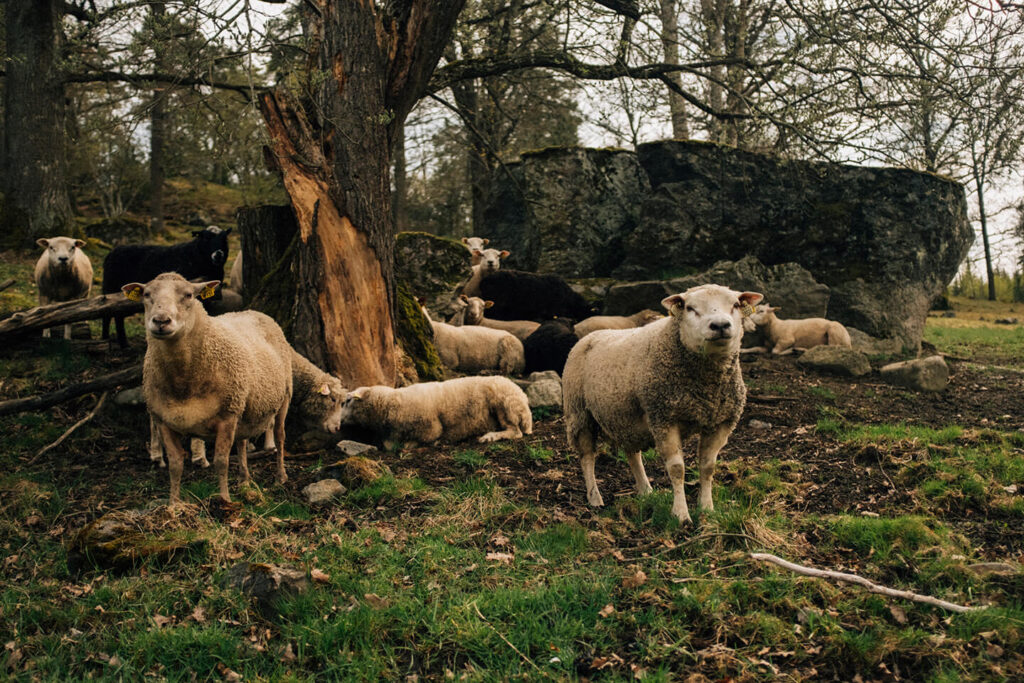New Swedish Wool Standard Paves the Way for Sustainable Fashion and Textile Industry
2023.08.28

A new common classification system for Swedish wool opens new market opportunities. Several Swedish brands are collaborating with sheep farmers and wool brokers toward the mission zero waste of Swedish wool.
Press release 28-08-23: Half of all wool produced in Sweden goes to waste, while Swedish brands in the fashion, outdoor, and home furnishing sectors actively seek sustainable textile materials. In response, The Swedish Wool Initiative is launching the first Swedish classification system for wool. The standard simplifies the process of selling and purchasing high-quality Swedish wool, enabling brands to embrace Swedish wool as a circular and sustainable material in the fashion and textile industry.
“We now have a unified language for all wool in Sweden! This greatly facilitates collaboration across the entire value chain, from sheep owners, shearers, and wool brokers to buyers at fashion, outdoor, and home furnishing brands. The classification system plays a crucial role in harnessing Swedish wool as a circular and sustainable material within the fashion and textile industry,” says Johan Sidenmark, who leads The Swedish Wool Initiative at Axfoundation.

Swedish brands in the fashion and textile industry are increasingly seeking regionally produced, biobased, and recyclable materials with circular potential.
The process of wool classification entails a wool broker procuring wool from diverse farms, meticulously assessing the properties of the raw wool, and classifying it into distinct quality types and grades. A notable advantage is that brands can now acquire larger quantities of precisely the desired quality of Swedish wool. This diminishes Sweden’s reliance on imported wool, which often carries a larger carbon footprint and falls short in terms of animal welfare standards.
The Swedish wool market currently encompasses numerous sheep breeds, each presenting a wide array of wool types and qualities. Through classification, even smaller quantities of wool from small-scale farms spread across the country can be gathered, classified collectively, and subsequently matched with the demands of buyers.
“Swedish wool has long been a part of our collections and we continue to see increased interest from our customers for sustainable materials. So far it has been difficult to buy the same wool quality from season to season. As a brand, we want to know exactly which wool we are getting in terms of length, thickness, color and luster. The new classification system opens up completely new market opportunities,” says Liisa Kessler, Creative Director at Filippa K, one of four founding brands behind the standard.

Wool is a super fiber with unique properties for clothing and textiles.
The classification system for Swedish wool has been developed by The Swedish Wool Initiative, a broad collaboration between stakeholders across the entire value chain. The initiative brings together wool specialists, wool brokers, shearers, sheep owners, as well as the prominent brands Filippa K, Fjällräven, Tiger of Sweden, and Klippan Yllefabrik. The standard has already been tested in practice during the shearing in 2023. Arena Svensk Ull will oversee the management and further development of the Swedish standard, which can be downloaded at www.axfoundation.se/en/swedish-wool-standard
Download The Swedish Wool Standard (English) ![]()
The Swedish Wool Initiative
The Swedish Wool Initiative is a broad collaboration between stakeholders throughout the value chain, from sheep owners to Swedish brands in the fashion, outdoor, and home furnishing sectors.
The goal is to enable Swedish brands and suppliers to easily access competitive Swedish wool raw materials of high and consistent quality. Through practical solutions, enhanced infrastructure, and improved logistics, the initiative contributes to the vision of zero waste of Swedish wool.
The Swedish Wool Initiative is driven by Axfoundation together with over 15 partners: Chalmers Industriteknik, Circularista, Filippa K, Fjällräven, Görvälnlammet, IVL Swedish Environmental Institute, Klippan Yllefabrik, LE Ullkonsult, LRF Federation of Swedish Farmers, Norrby gård, Smart Textiles/Science Park Borås, Swedish Sheep Shearing Association, Tiger of Sweden, TrusTrace, Ullcentrum, Ullkontoret, and Västkustens Ullinsamling/CC Wool.
Facts About Textiles and Wool
- In Sweden, approximately 1,000 tons of wool are produced annually, but more than 50% is discarded.
- At the same time, Sweden imports over 1,700 tons of wool each year in the form of raw wool, carded wool, and yarn.
- Imported wool often has a higher carbon footprint than Swedish wool and is often produced with lower animal welfare standards.
- Demand for new textile fibers is projected to increase globally by 150 percent by 2050, putting increased pressure on both climate and the environment.
- Swedish brands in the fashion and textile industry are increasingly seeking regionally produced, biobased, and recyclable materials with circular potential. Wool is an example of such a material.
- Wool is a super fiber with unique properties for clothing and textiles. This eliminates the need for chemicals such as PFAS or biocides, often used in other materials. Untreated wool products can, therefore, be recycled or composted.














































